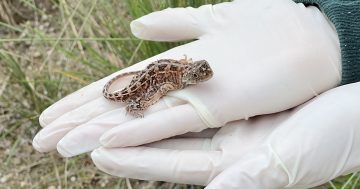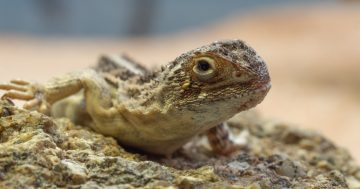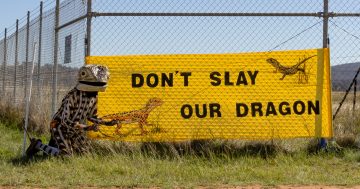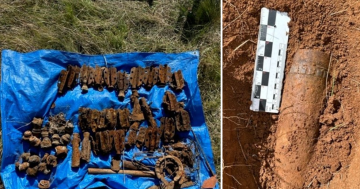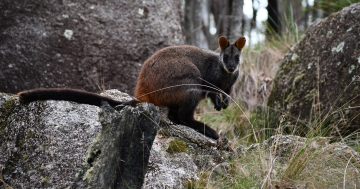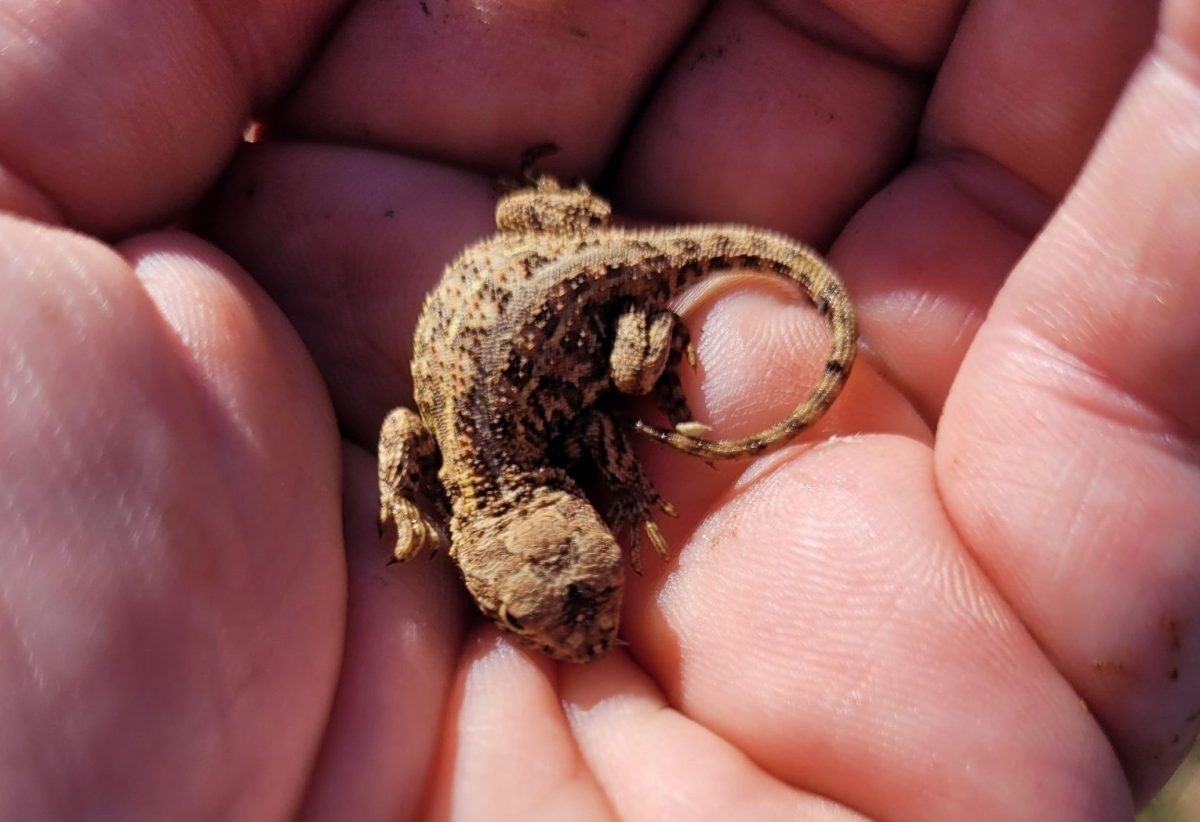
One of the Canberra Earless Grassland Dragons found in the Queanbeyan Nature Reserve. Photo: Rob Armstrong, NSW DPE.
Cupped in Rob Armstrong’s hand is one of the first Canberra Grassland Earless Dragons to be seen in NSW in two years, following devastating population decline.
The NSW Department of Planning and Environment threatened species ecologist came across the four tiny lizards during recent area surveys.
“The species is certainly declining; we had some concerns they may have disappeared from the region,” Mr Armstrong said.
“Given they’re there certainly is reinvigorating and excites you to keep going.”
In NSW the endangered dragons can only be found in three paddocks in grassland near Jerrabomberra that are separated by roads, making it difficult to breed and diversify.
“They’re living in smaller areas they can’t escape from; the grassland left for them is interrupted by roads and train tracks,” Mr Armstrong said.
Monitoring of the species in NSW began in 2003, with an annual program of 10 surveys conducted in the Queanbeyan Nature Reserve and a private land site. Historically between 10 and 30 dragons would be found each year.
The surveys are now undertaken as part of the Saving Our Species program, with artificial ‘arthropod’ burrows set up along the ground as part of a harm-free detection method.
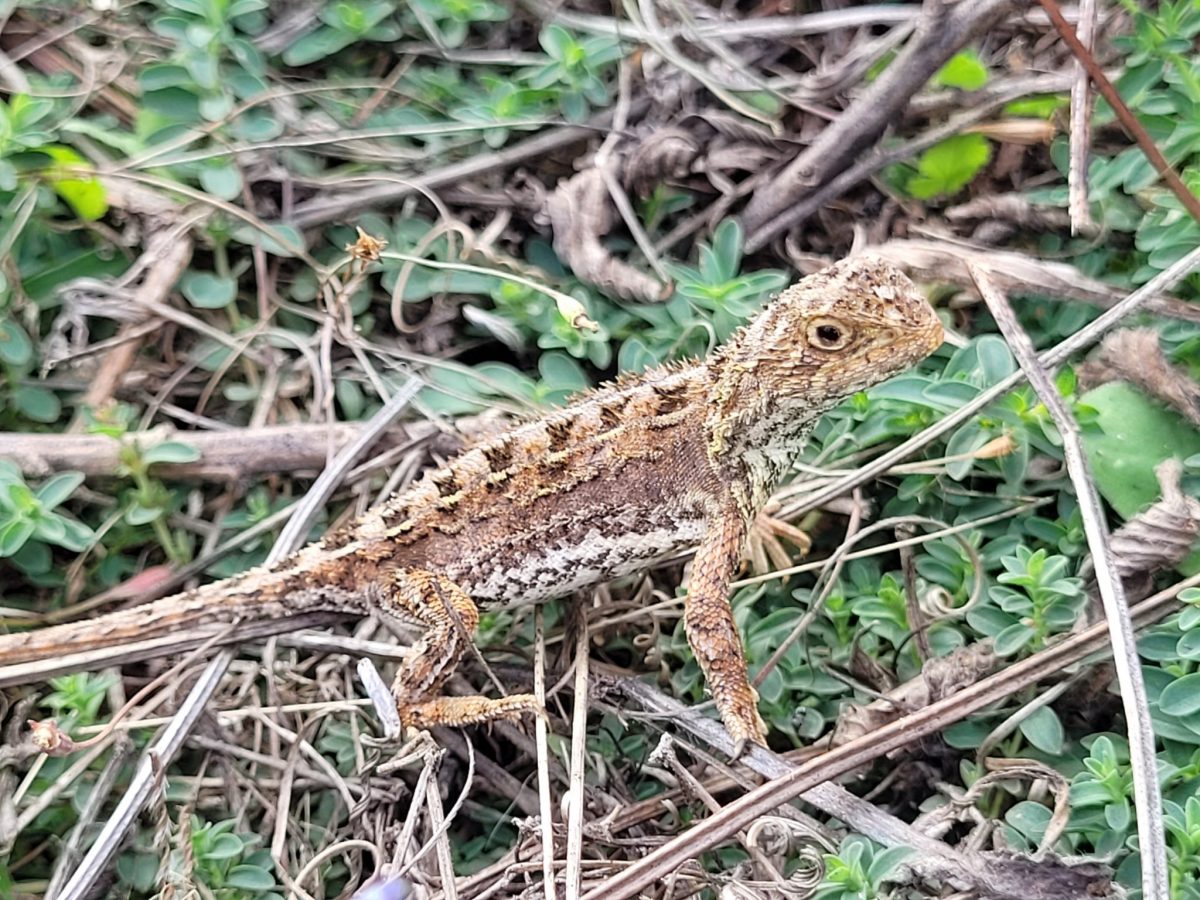
One of the Canberra Earless Grassland Dragons found in the Queanbeyan Nature Reserve. Photo: Rob Armstrong, NSW DPE.
“We’re trying to mimic wolf spider burrows; the lizards can co-exist in there with the larger ones, however I’m not sure how much the spiders love that,” Mr Armstrong said.
“The lizards can dart in and out of the burrows [we set up], and we check them once a week.”
Mr Armstrong called the lizards a “Goldilocks species”, providing a marker on how the overall environment is faring.
“They’re special to the region, a flagship species that brings attention to the difficulties of maintaining grassland habitat in the region,” he said.
“Their decline is likely a combination of how grassland structures are managed and how they’ve responded to the drought and rain. The recent rain actually means the grass is too thick. They can’t move easily and find more invertebrates to eat, so we are looking into ecological burning to lighten the biomass [in the area].
“They’re also engaging and super cute.”
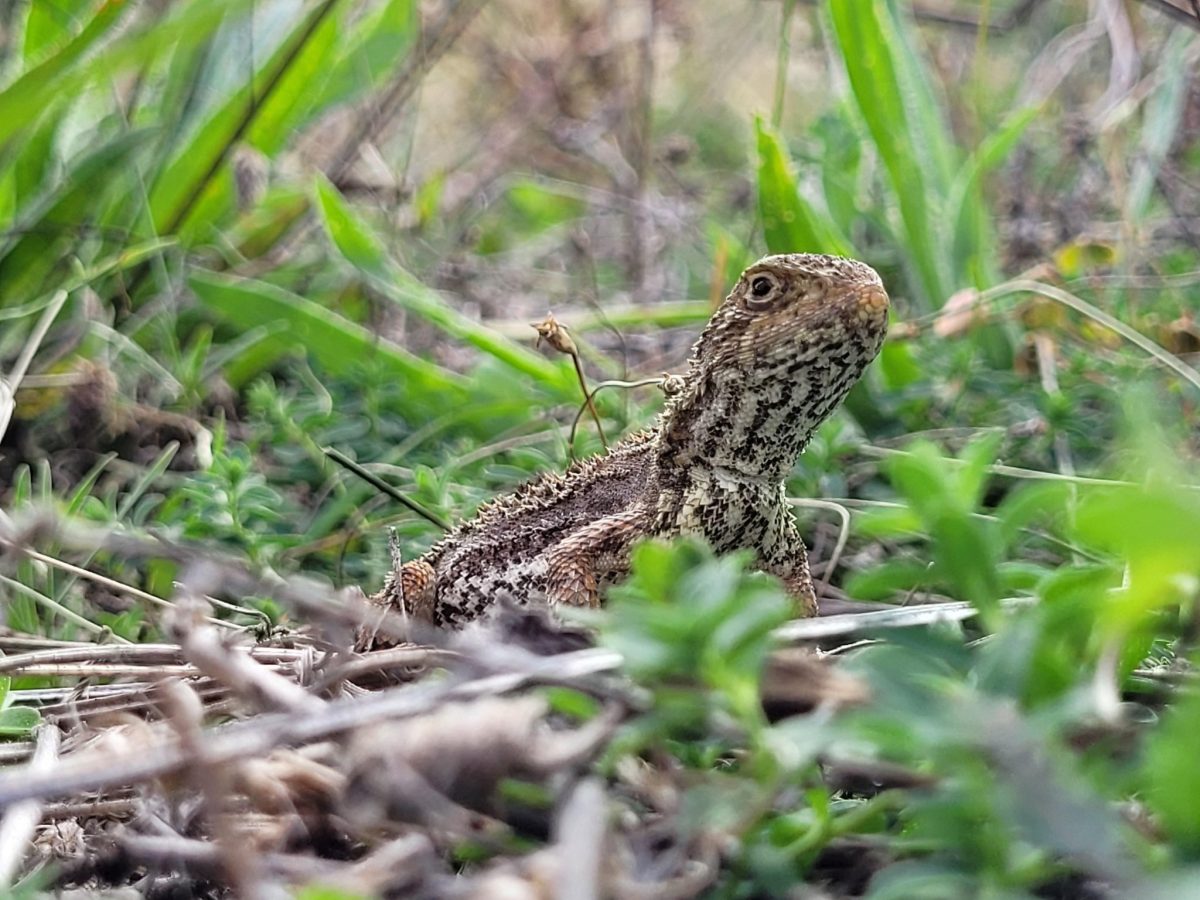
One of the Canberra Earless Grassland Dragons found in the Queanbeyan Nature Reserve. Photo: Rob Armstrong, NSW DPE.
His counterparts across the border in Canberra agree. Dr Ben Croak and Dr Sarah May are both part of the Canberra Grassland Earless Dragon breeding program, which is being undertaken at Tidbinbilla Nature Reserve by the ACT Government.
Research ecologist Dr Croak said a drastic decline has also been detected in Canberra’s population of the dragons.
“Grasslands are under threat everywhere; some sources say there’s been a reduction of 99 per cent of the grasslands that once covered NSW and Victoria,” he said.
“We’ve noticed a massive drop off in the animals and we’re trying to understand why there’s been such a dramatic decline.
“There’s lots at play; there are issues with weed incursion as the dragons aren’t built to be in areas choked by weeds, as well as altered grazing regimes. The droughts caused havoc on the population and the fact that they’re so fragmented; they can’t join up with larger populations to breed, so we’re losing that diversity in their genes.”
The pair said the lizards used to be “super abundant” in the region, with sightings in the tens of thousands. They now think only hundreds are left in the wild.
“It’s a good sign they’ve been seen again in NSW, but they’re still in a lot of trouble,” Dr Croak said.
“We have been seeing a few more since all of the rain, but nowhere near what it used to be.”
Dr May said if the dragon became extinct, it would be a historically catastrophic event.
“It would be the first reptilian extinction recorded on mainland Australia,” she said.
“So our breeding program is hugely important; it’s not just about increasing numbers but creating that ‘insurance population’ as well.”
The Canberra facility built in Tidbinbilla in 2021 started with 27 animals, but after one breeding season they now have 56 scurrying around.
Dr May said the breeding program gives researchers a significant opportunity to better understand the dragons’ ecology and create a more resilient species.
“We need to give it a better chance to adjust to changes in the environment by diversifying the genes,” she said.
The team is now working out how to transfer part of their brood back into the wild in a way that will allow the population to re-establish.
“They would be radio tracked to see how they fare; we’re aiming for a staged release; we’ll protect them from predators and then open up their area and see how they use it,” Dr Croker said.
Click here for more information on the conservation program and Canberra facility and click here for a profile on the Grassland Earless Dragon.
Original Article published by Claire Fenwicke on About Regional.












